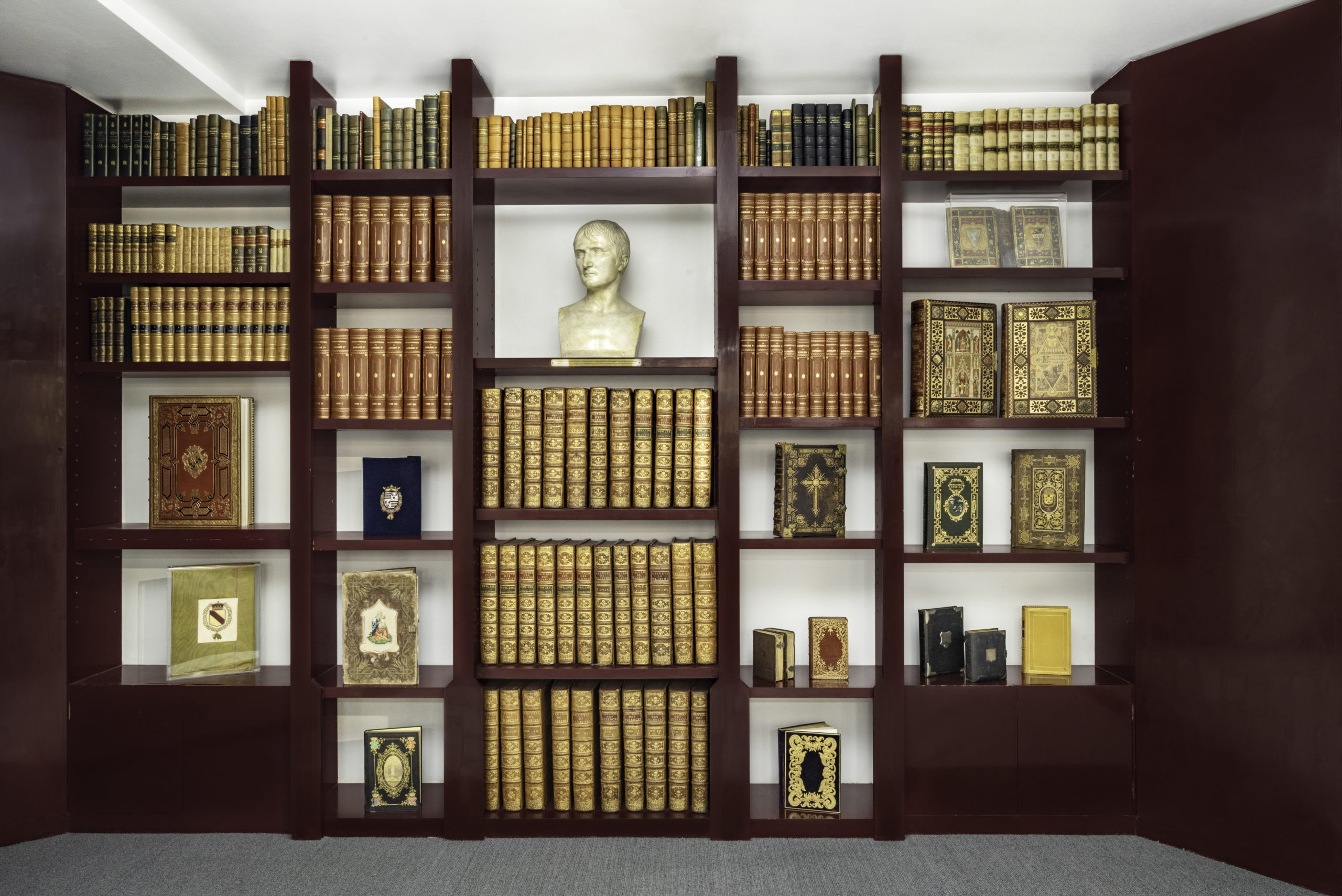
The children of Michel Wittock are direct descendants of Lucien Bonaparte on their mother’s side, which provides an explanation for how the Wittockiana has come to conserve some familial documents, including a substantial archival collection and documentation related to the brother of the emperor Napoléon and his family. In the Wittockiana’s Council Room, one can admire a stately bust of Lucien Bonaparte, prince of Canino and Musignano.
The showpiece of this library is without a doubt the impressive series of 33 volumes of the famous Encyclopédie ou Dictionnaire raisonné des Sciences, des Arts et des Métiers, Par une Société de Gens de Lettres (Paris, 1751-1777). Under the direction of Diderot and d’Alembert, over two hundred experts authors collaborated on this immense project, one of the most ambitious undertakings in French publishing under the Ancien Régime. These precious volumes bound in speckled calf – of which the majority bear the gilded emblem of the Order of Lawyers of Rennes on their front cover and the ex-libris of Prince Gabrielli, son-in-law to the Prince of Canino, on the inside cover – were mostly likely confiscated by Lucien when he was acting as Minister of the Interior.
Another significant part of the collection worth mentioning is the Correspondances of Napoléon Bonaparte, published by order of the emperor Napoléon III (Paris, Imprimerie impériale, 1858-1869). This edition, specially printed on fine paper, comprises 32 volumes; it was specially printed for the emperor and has never been available for commercial purchase. This particular copy was a gift from Napoléon III to his cousin, Prince Gabrielli.
The archives of the Lucien Bonaparte collection consist principally of the handwritten memoirs, contained in a number of notebooks, of the princess Julie Bonaparte who hosted a literary salon in Paris under the Second Empire. As interesting as they are unprecedented, the memoirs are accompanied by a dozen of family photo albums dating to the end of the first half of the 19th century.
